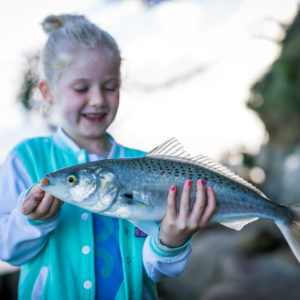A document discussing four types of Marine Protected Areas, including recreational fishing parks, has been released for consultation. This consultation process is a joint effort between the Ministers for Primary Industries, Conservation and Environment. Deadline for submission is March 11th, 2016.
The New Zealand Sport Fishing Council team is working through the discussion document and LegaSea will keep you informed of progress via our online channels. It is important we weigh up the costs and benefits of the proposals and double-check any recreational rule changes that may accompany the establishment of recreational fishing parks.
At first glance this process signals the failure of successive fisheries Ministers and Ministries to sustain fish populations at levels that provide for public use and expectations. This responsibility is now being passed onto other government bureaucracies and this change is a major concern for recreational fishers because our environmental and fishing interests are protected by the Fisheries Act 1996.
The inclusion of two specific proposals for recreational fishing parks in the Hauraki Gulf and Marlborough Sounds, before the bill has been drafted or legislation passed, is more about following up on a hasty election promise than good process.
The document describes the purpose for a recreational fishing park as being, “to enhance the enjoyment and value of recreational fishing in high-demand areas by reducing the impact of commercial fishing and enabling recreational fishers to take more responsibility for the effects of their activities in these areas and the sustainability of the fishery”.
Reducing impacts of commercial fishing
When making sustainability decisions the Minister is already obliged to consider the effects of fishing on the environment, people’s wellbeing and the needs of future generations.
The Minister has a suite of tools in the Fisheries Act that could be applied to reduce the impacts of commercial fishing; some are rarely used due to the influence that commercial fishers wield in the realms of science and management.
Several commercial fishing methods are more damaging to the environment than others. Trawling and Danish seining are already banned from the inner Hauraki Gulf and there is not a lot of bulk harvesting in the Marlborough Sounds.
Removing a few small-scale commercial fishers from within the proposed parks is unlikely to translate into more successful recreational fishing.
Non-commercial species
Recreational fishers target snapper, flatfish, kahawai, john dory, gurnard, tarakihi, trevally and scallops within the proposed Hauraki Gulf park area. It is proposed these species, excluding scallops, would be classed as non-commercial in the park.
There is no mention of classing other important species such as crayfish and kingfish as non-commercial yet these are two species that generate high economic activity when compared to the levels of recreational catch. If anything, these ought to be considered for non-commercial status too but have probably been excluded because any change would attract substantial compensation demands.
For the Marlborough Sounds, the document lists 12 finfish species, their estimated commercial catch within the proposed park, and notes that commercial fishers could continue to harvest paua, scallops and crayfish. Locals are most concerned that ongoing commercial scallop dredging is causing undue damage to critical juvenile habitat.
Taking responsibility
Recreational fishing is portrayed as a growing activity increasing pressure on inshore fish stocks and tension between sectors, and sustainability. In reality, NIWA boat ramp surveys in the Hauraki Gulf show recreational fishing effort has decreased and snapper catch has reduced by more than 50% since 2011-12.
Also, there is ample evidence that fishers in the snapper and blue cod fisheries have strived for many years to implement effective and voluntary measures to sustain fish populations.
If this government is serious about sustainability then the Minister, Nathan Guy, needs to fulfil his obligations and restore abundance across the whole stock.
We propose establishing an inshore zone with limited commercial fishing, managing to higher environmental standards and lowering commercial catch levels as the most effective package of measures to increase fish abundance, improve catchability and provide for the public’s expectations, health and wellbeing.





